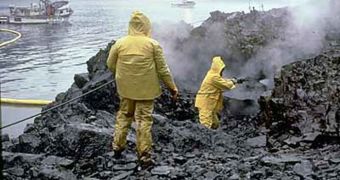Oil spills are man-made disasters that often disrupt the balance of marine environments. A new study reveals another disturbing fact, highlighting that such incidents have a much more harmful impact than previously thought.
The new report, issued due to a collaboration between NOAA and the UC Davis Bodega Marine Laboratory indicates that phototoxicity is a serious threat that hasn't been taken into consideration by previous studies estimating the terrible effects of an oil spill on the environment.
Experts have reached this conclusion after observing in their laboratories how fish embryos assimilate oil, Los Angeles Times informs.
After being exposed to UV rays from sunlight, they "physically disintegrate." Scientists are convinced that the same path is applied in marine environments, while dealing with an oil spill.
“This phenomenon had been observed in the laboratory, but had never been observed in the field, and there were even some skeptics out there wondering if this was just a phenomenon that people would see under lab conditions,” explained Gary Cherr, director of the marine lab and professor of environmental toxicology.
Phototoxicity is an element intensively studied by scientists. It has been associated with the presence of crude oil and creosote, triggering rashes or redness on human skin in direct contact with sunlight.
However, correlating phototoxicity with a toxic oil spill is a new perspective closely analyzed by scientists.
This phenomenon raised a lot of interest ever since a small oil spill was detected off Panama's coast, in the 1980s, blamed for destroying corals and damaging the entire ecosystem.
Back then, researchers investigating the disaster have found out that oil is directly hazardous and threatens algae and other species, but has a greater impact while interacting with sunlight, according to Scientific American.
"In retrospect, a good part of the damage was from photo-enhanced toxicity.It's not very well understood in the field. This oil spill may give us an opportunity to learn a lot more about how much of a factor that is," said Jeffrey Short from environmental group Oceana, who has studied the phenomenon after the notorious Exxon Valdez spill.
At this point in time, researchers believe that phototoxic consequences could increase the threat posed by major oil spills, such as the Deepwater Horizon blowout recorded in the Gulf of Mexico.

 14 DAY TRIAL //
14 DAY TRIAL //